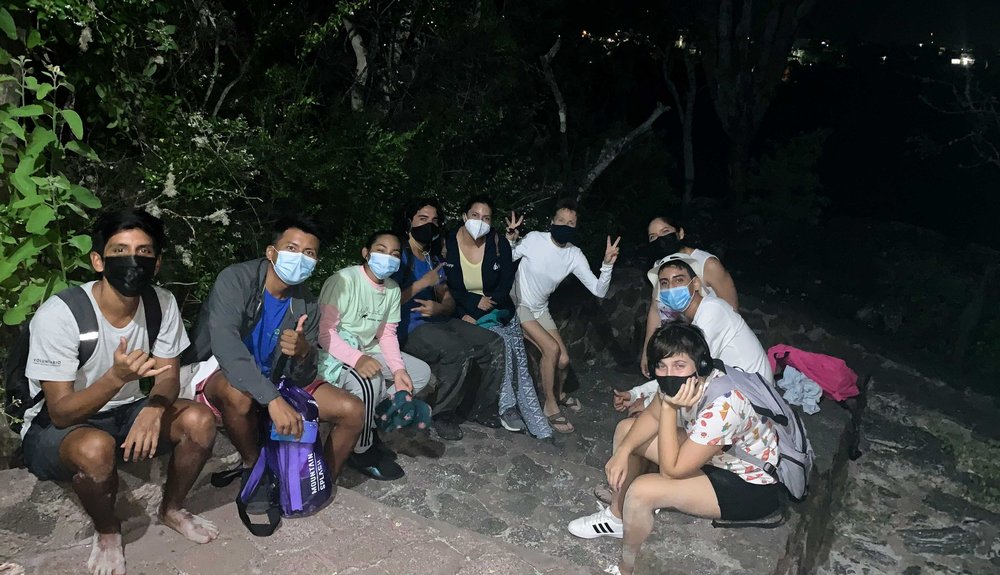Enthusiasm, positive energy and good attitude are the most obvious characteristics that I notice when looking at the youths who are part of the "Shark Ambassadors", the Science Club of the Charles Darwin Foundation (CDF).
This is a non-formal education project that aims to provide a learning space for these youths on various topics related to the socio-ecosystems of the islands, develop skills and abilities and apply this knowledge in the community in which they live. . The Shark Ambassadors are made up of children, from 11 to 17 years old, from the community of Santa Cruz Island who agree on their interest and willingness to support the conservation of the Galapagos Islands, which they undoubtedly do from this group.
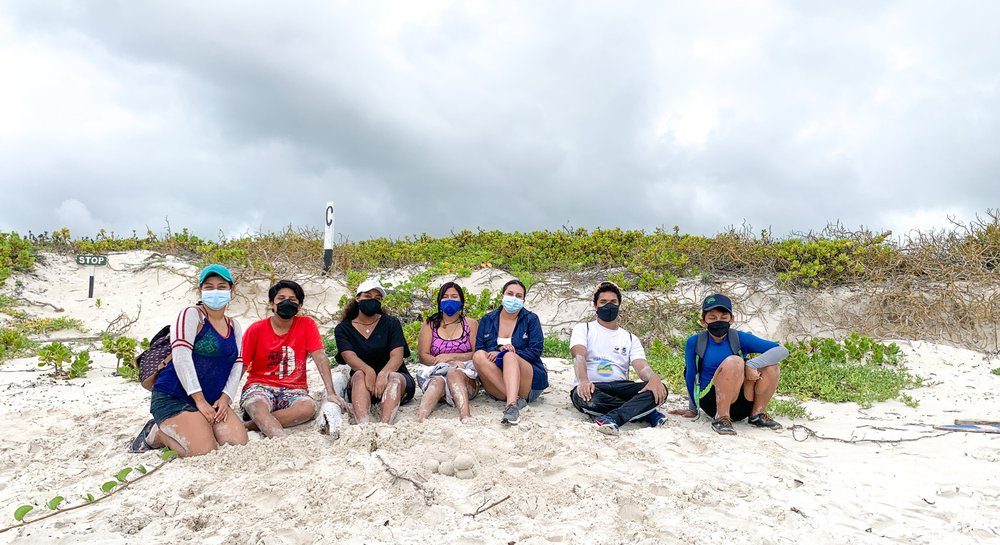
I had the great opportunity to work with the Shark Ambassadors and go on field outings to the beach known as Tortuga Bay to see the nesting monitoring of sea turtles, an activity developed by Ecology Project International (EPI) led by the Galapagos National Park Directorate (DPNG) during the breeding season of this species.
I want to share with you my experience that overflows with joy as well as my desire to learn and help.
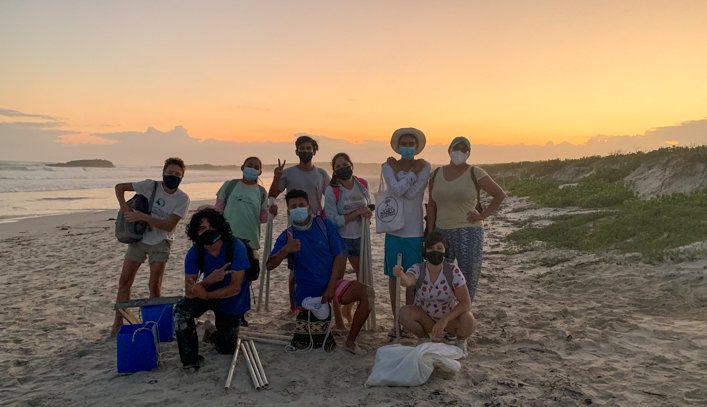
We all meet at the entrance of Tortuga Bay at 6:45am. It was essential to bring water, sunscreen, hand-sanitizer and a mask (due to the biosecurity protocols). We were greeted by the EPI staff; we had a couple of minutes to get to know each other and our researcher Anne Guezou. I was grateful to have this moment as I didn’t know the Shark Ambassadors or the EPI team, which was made up of Lady Márquez, Sebastián Pilla and Erik Ojeda. After getting to know each other we were given the schedule and plan for the day.
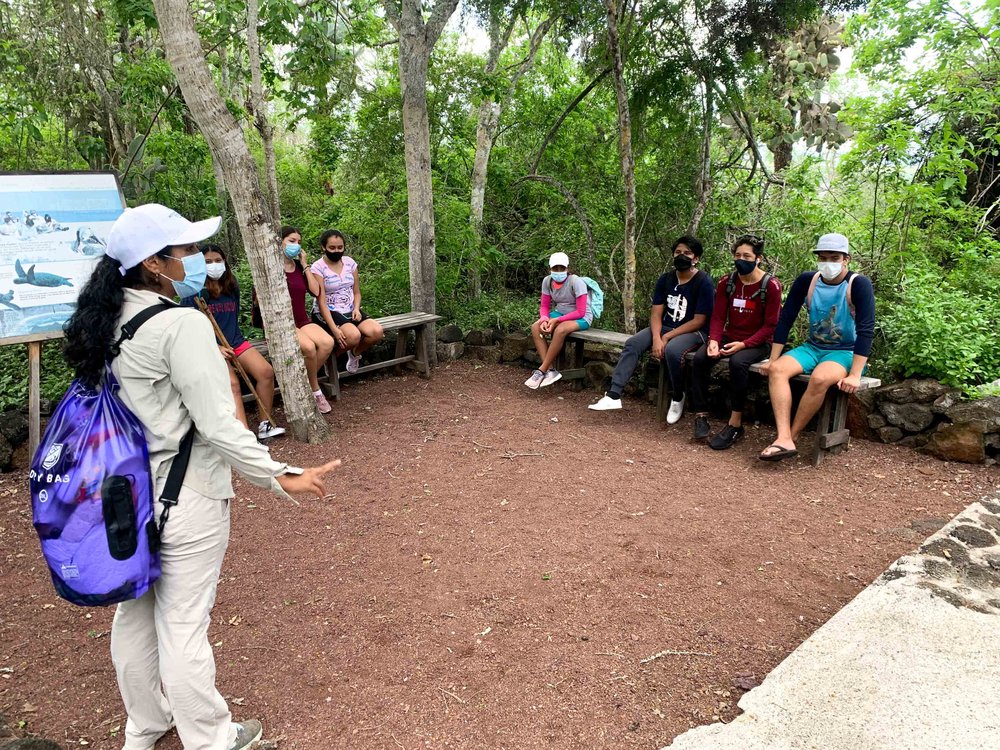
The walk to the beach was an enjoyable one as we passed the time getting to know each other a little more. When we got to the beach, it was Ann’s turn to speak and she gave us a talk about microplastics and a short induction to be able to do a little monitoring of microplastics in the different transects of the beach.
After this talk, we split the Shark Ambassadors into smaller groups and then the activity began. We started looking through the sand for microplastics, collecting samples that were stored and then taken back to the laboratory for analysis.
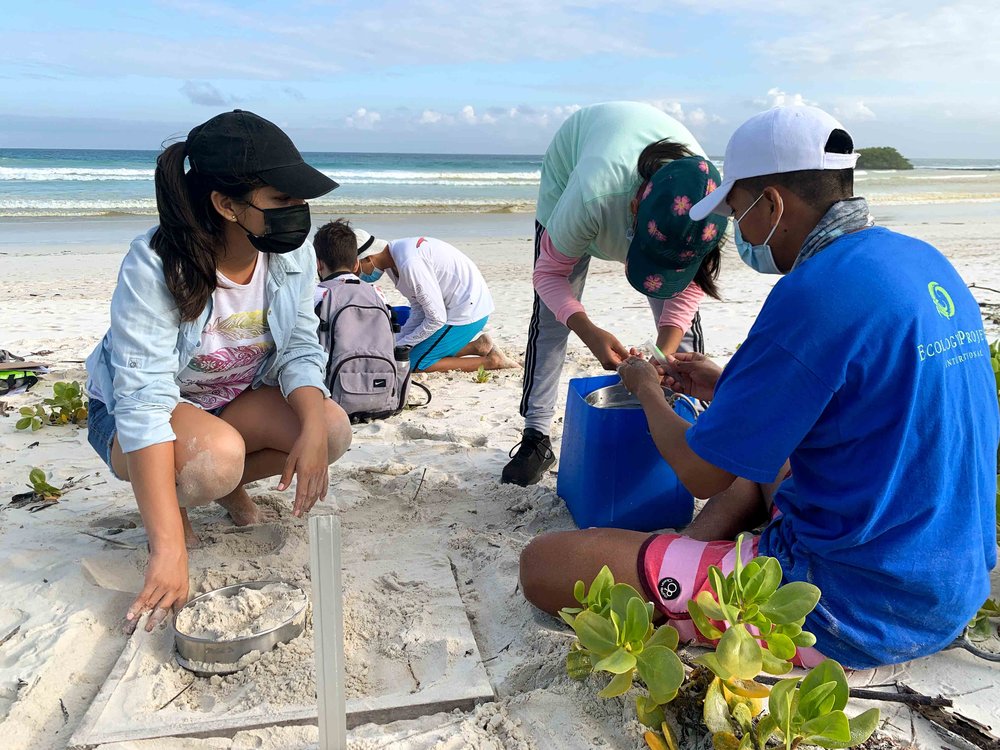
The EPI team gave an introduction to the nesting activity of sea turtles. They explained how to recognize turtle nests as well as ways to protect them. The Shark Ambassadors set to work, as always, and built a barrier with tubes and rope to enclose the nest and thus prevent it from being trampled by accident.
Finally, to finish with the activity, we performed the count of the nests and the respective record of what was found. This marked the end of this activity and we made our way back to Puerto Ayora at around 10:30 am.
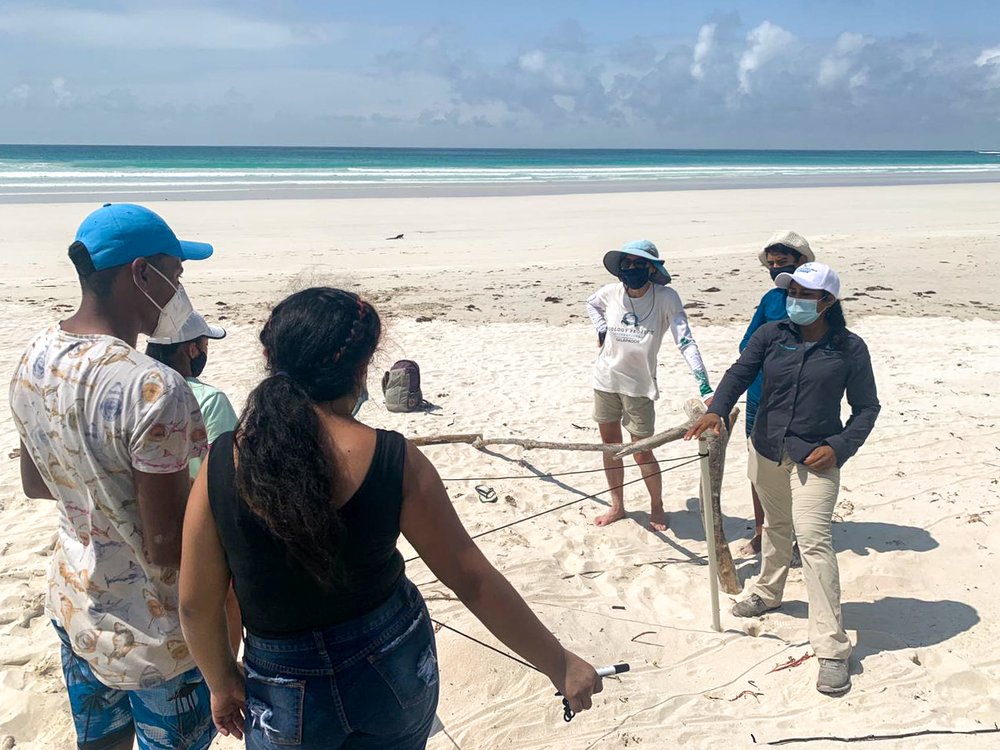
After several weeks of going to Tortuga Bay to monitor the nests and place protective fences in new nests sites, it was time to check if the turtles inside them had hatched. This was a long process that took us all morning and lasted until the afternoon.
As in the other outings, the meeting point was the booth of the Directorate of the Galapagos National Park (DPNG) at 15h15, we had to add insect repellent because our activity would extend until the night and the mosquitoes would be plentiful. Before 16h00 all the equipment was already on the beach, and until 17h00 we did the micro plastics activity since we could not dig nests while swimmers were in this sector.
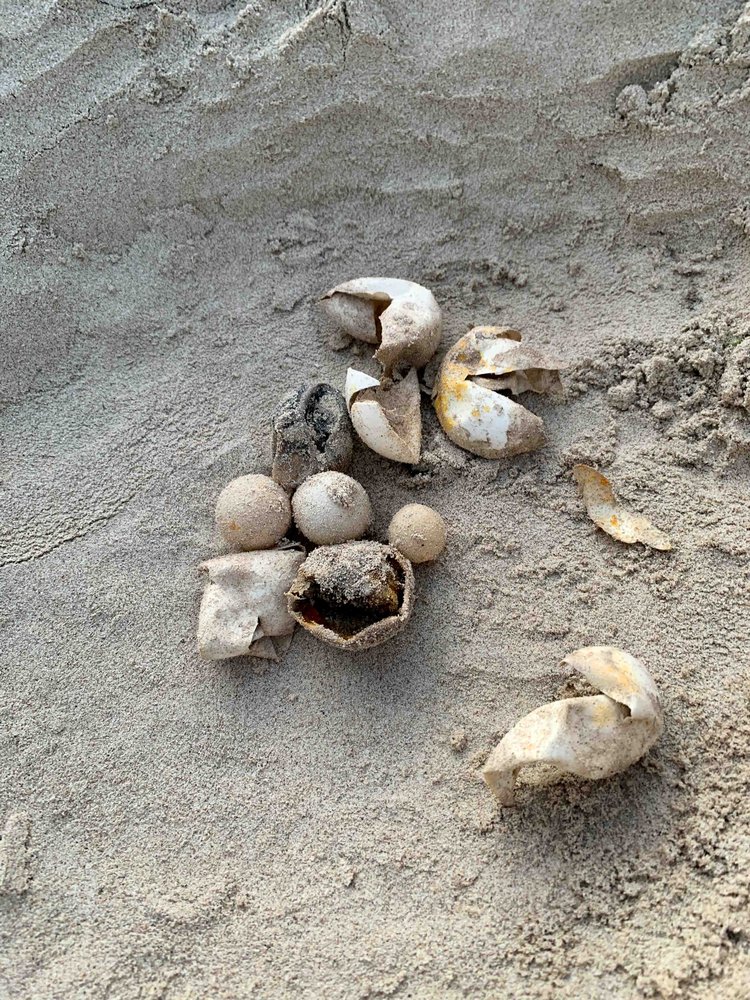
Once the visitors left, we split the Shark Ambassadors into smaller groups, each group began to carefully dig one to two nests. This was done to check the condition of the eggs. The eggs were all counted and the non-hatching eggs were examined and the relevant data is taken from all the information collected. It is important to mention that we only examine the nest after enough time has passed for the eggs to hatch, we only check to see how many eggs hatched. However, life is full of surprises.
On one of the outings, while we were carefully digging, we found newborn turtles in the nest. We can assume they tried to get out, but couldn't as the sand was too compact due to heavy rain the last couple of days, which meant that they were trapped. This meant we arrived just in time to help the newborn turtles. After lending a helping hand, the turtles made their way to the ocean.
Thinking back to this memory, I wonder how could I describe this experience? The answer is, unbelievable! To have seen baby turtles, newborns, going out to sea was exciting. Even more, understanding the perfection of nature motivates me to love my environment much more and increased my desire to continue caring for these islands that have given me so much.
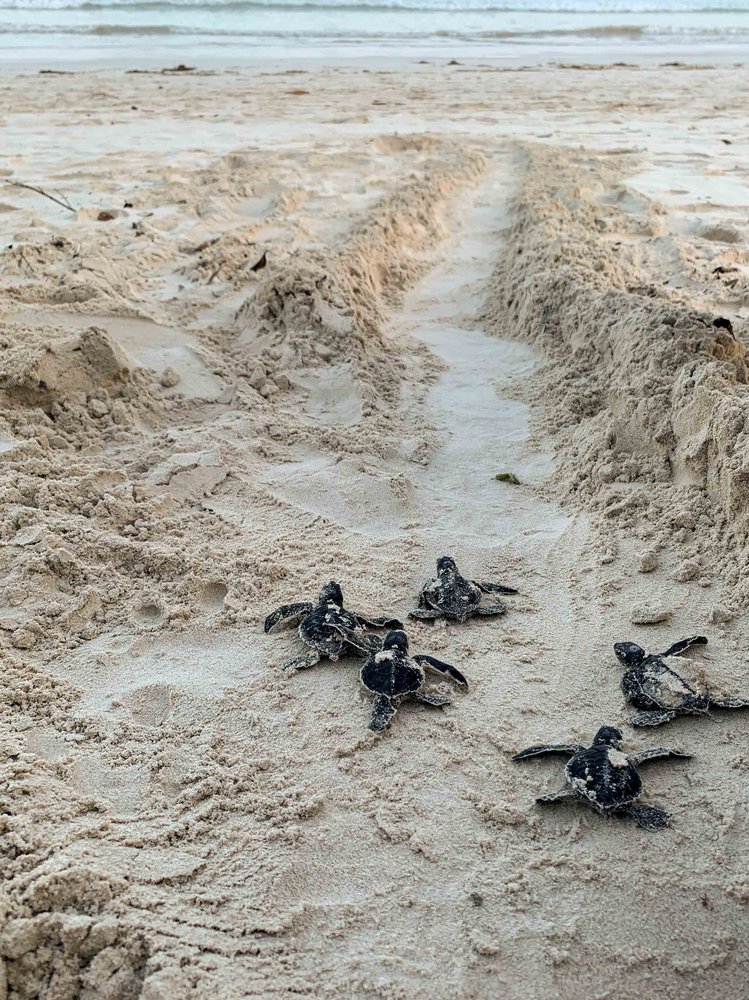
However, I shouldn't just tell you how beautiful this experience is. There are also sad things that are important to mention, as it is part of the natural processes, the life cycle of species such as sea turtles.
While we were happy to see the hatchlings make their way to sea, a flock of seabirds arrived. They flew over the site and preyed on them. In the end, we couldn't know how many of the hatchlings survived, all we could do was witness the event, as it is part of the natural life-cycle of the sea turtles.
Did you know of all the eggs laid on the beaches each year less than 60% survive? Out of 1000 turtles that are born only one will reach adulthood. This is because while baby turtles go in search of the sea to start their journey across the ocean, there are many natural and anthropogenic factors that can interfere and prevent this natural process from being carried out successfully, one of them being seabirds that are predators of baby sea turtles.
During the nesting season, the Shark Ambassadors participated in nine outings to Tortuga Bay. This was done to monitor the nesting site. The field trips were made between the months of March to May. Without a doubt, these activities are very important within the non-formal education programs developed by the shark ambassadors. In these outings, knowledge about sea turtles is shared, the development of greater sensitivity about their threats and the use of scientific learning tools for young people are promoted.
To know and love our home, Galapagos. It’s important that we feel like custodians of the islands. We can do this by contributing and sharing our knowledge for the conservation of this magical place, which always seems to surprise us with new findings and good news.
Let’s take care of Galapagos and its species. The Shark Ambassadors serve as a good example as they have decided to be part of the change through these environmental education and citizen science activities.
I want to thank Juan Sebastián Torres and Isabel Grijalva for the opportunity to be a part of this amazing experience. Anne Guezou, for sharing all of her knowledge and for teaching us about microplastics (A subject I did not know about). Lady Márquez, Sebastián Pilla and Erik Ojeda EPI and the DPNG for their contributions to green turtle. Finally, to the shark ambassadors, for the dedication and love they put into each activity.
